RBS 2011 Annual Report Download - page 211
Download and view the complete annual report
Please find page 211 of the 2011 RBS annual report below. You can navigate through the pages in the report by either clicking on the pages listed below, or by using the keyword search tool below to find specific information within the annual report.-
 1
1 -
 2
2 -
 3
3 -
 4
4 -
 5
5 -
 6
6 -
 7
7 -
 8
8 -
 9
9 -
 10
10 -
 11
11 -
 12
12 -
 13
13 -
 14
14 -
 15
15 -
 16
16 -
 17
17 -
 18
18 -
 19
19 -
 20
20 -
 21
21 -
 22
22 -
 23
23 -
 24
24 -
 25
25 -
 26
26 -
 27
27 -
 28
28 -
 29
29 -
 30
30 -
 31
31 -
 32
32 -
 33
33 -
 34
34 -
 35
35 -
 36
36 -
 37
37 -
 38
38 -
 39
39 -
 40
40 -
 41
41 -
 42
42 -
 43
43 -
 44
44 -
 45
45 -
 46
46 -
 47
47 -
 48
48 -
 49
49 -
 50
50 -
 51
51 -
 52
52 -
 53
53 -
 54
54 -
 55
55 -
 56
56 -
 57
57 -
 58
58 -
 59
59 -
 60
60 -
 61
61 -
 62
62 -
 63
63 -
 64
64 -
 65
65 -
 66
66 -
 67
67 -
 68
68 -
 69
69 -
 70
70 -
 71
71 -
 72
72 -
 73
73 -
 74
74 -
 75
75 -
 76
76 -
 77
77 -
 78
78 -
 79
79 -
 80
80 -
 81
81 -
 82
82 -
 83
83 -
 84
84 -
 85
85 -
 86
86 -
 87
87 -
 88
88 -
 89
89 -
 90
90 -
 91
91 -
 92
92 -
 93
93 -
 94
94 -
 95
95 -
 96
96 -
 97
97 -
 98
98 -
 99
99 -
 100
100 -
 101
101 -
 102
102 -
 103
103 -
 104
104 -
 105
105 -
 106
106 -
 107
107 -
 108
108 -
 109
109 -
 110
110 -
 111
111 -
 112
112 -
 113
113 -
 114
114 -
 115
115 -
 116
116 -
 117
117 -
 118
118 -
 119
119 -
 120
120 -
 121
121 -
 122
122 -
 123
123 -
 124
124 -
 125
125 -
 126
126 -
 127
127 -
 128
128 -
 129
129 -
 130
130 -
 131
131 -
 132
132 -
 133
133 -
 134
134 -
 135
135 -
 136
136 -
 137
137 -
 138
138 -
 139
139 -
 140
140 -
 141
141 -
 142
142 -
 143
143 -
 144
144 -
 145
145 -
 146
146 -
 147
147 -
 148
148 -
 149
149 -
 150
150 -
 151
151 -
 152
152 -
 153
153 -
 154
154 -
 155
155 -
 156
156 -
 157
157 -
 158
158 -
 159
159 -
 160
160 -
 161
161 -
 162
162 -
 163
163 -
 164
164 -
 165
165 -
 166
166 -
 167
167 -
 168
168 -
 169
169 -
 170
170 -
 171
171 -
 172
172 -
 173
173 -
 174
174 -
 175
175 -
 176
176 -
 177
177 -
 178
178 -
 179
179 -
 180
180 -
 181
181 -
 182
182 -
 183
183 -
 184
184 -
 185
185 -
 186
186 -
 187
187 -
 188
188 -
 189
189 -
 190
190 -
 191
191 -
 192
192 -
 193
193 -
 194
194 -
 195
195 -
 196
196 -
 197
197 -
 198
198 -
 199
199 -
 200
200 -
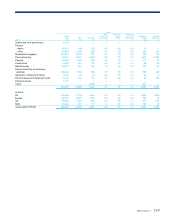 201
201 -
 202
202 -
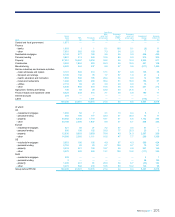 203
203 -
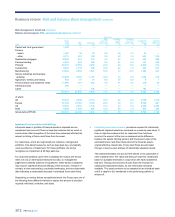 204
204 -
 205
205 -
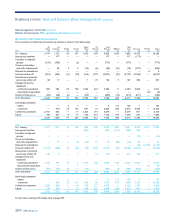 206
206 -
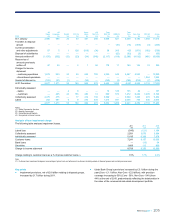 207
207 -
 208
208 -
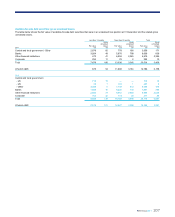 209
209 -
 210
210 -
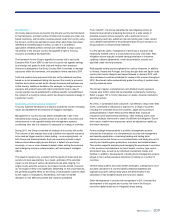 211
211 -
 212
212 -
 213
213 -
 214
214 -
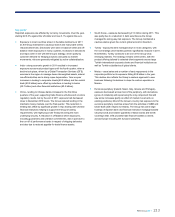 215
215 -
 216
216 -
 217
217 -
 218
218 -
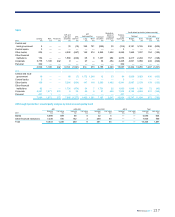 219
219 -
 220
220 -
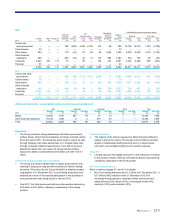 221
221 -
 222
222 -
 223
223 -
 224
224 -
 225
225 -
 226
226 -
 227
227 -
 228
228 -
 229
229 -
 230
230 -
 231
231 -
 232
232 -
 233
233 -
 234
234 -
 235
235 -
 236
236 -
 237
237 -
 238
238 -
 239
239 -
 240
240 -
 241
241 -
 242
242 -
 243
243 -
 244
244 -
 245
245 -
 246
246 -
 247
247 -
 248
248 -
 249
249 -
 250
250 -
 251
251 -
 252
252 -
 253
253 -
 254
254 -
 255
255 -
 256
256 -
 257
257 -
 258
258 -
 259
259 -
 260
260 -
 261
261 -
 262
262 -
 263
263 -
 264
264 -
 265
265 -
 266
266 -
 267
267 -
 268
268 -
 269
269 -
 270
270 -
 271
271 -
 272
272 -
 273
273 -
 274
274 -
 275
275 -
 276
276 -
 277
277 -
 278
278 -
 279
279 -
 280
280 -
 281
281 -
 282
282 -
 283
283 -
 284
284 -
 285
285 -
 286
286 -
 287
287 -
 288
288 -
 289
289 -
 290
290 -
 291
291 -
 292
292 -
 293
293 -
 294
294 -
 295
295 -
 296
296 -
 297
297 -
 298
298 -
 299
299 -
 300
300 -
 301
301 -
 302
302 -
 303
303 -
 304
304 -
 305
305 -
 306
306 -
 307
307 -
 308
308 -
 309
309 -
 310
310 -
 311
311 -
 312
312 -
 313
313 -
 314
314 -
 315
315 -
 316
316 -
 317
317 -
 318
318 -
 319
319 -
 320
320 -
 321
321 -
 322
322 -
 323
323 -
 324
324 -
 325
325 -
 326
326 -
 327
327 -
 328
328 -
 329
329 -
 330
330 -
 331
331 -
 332
332 -
 333
333 -
 334
334 -
 335
335 -
 336
336 -
 337
337 -
 338
338 -
 339
339 -
 340
340 -
 341
341 -
 342
342 -
 343
343 -
 344
344 -
 345
345 -
 346
346 -
 347
347 -
 348
348 -
 349
349 -
 350
350 -
 351
351 -
 352
352 -
 353
353 -
 354
354 -
 355
355 -
 356
356 -
 357
357 -
 358
358 -
 359
359 -
 360
360 -
 361
361 -
 362
362 -
 363
363 -
 364
364 -
 365
365 -
 366
366 -
 367
367 -
 368
368 -
 369
369 -
 370
370 -
 371
371 -
 372
372 -
 373
373 -
 374
374 -
 375
375 -
 376
376 -
 377
377 -
 378
378 -
 379
379 -
 380
380 -
 381
381 -
 382
382 -
 383
383 -
 384
384 -
 385
385 -
 386
386 -
 387
387 -
 388
388 -
 389
389 -
 390
390 -
 391
391 -
 392
392 -
 393
393 -
 394
394 -
 395
395 -
 396
396 -
 397
397 -
 398
398 -
 399
399 -
 400
400 -
 401
401 -
 402
402 -
 403
403 -
 404
404 -
 405
405 -
 406
406 -
 407
407 -
 408
408 -
 409
409 -
 410
410 -
 411
411 -
 412
412 -
 413
413 -
 414
414 -
 415
415 -
 416
416 -
 417
417 -
 418
418 -
 419
419 -
 420
420 -
 421
421 -
 422
422 -
 423
423 -
 424
424 -
 425
425 -
 426
426 -
 427
427 -
 428
428 -
 429
429 -
 430
430 -
 431
431 -
 432
432 -
 433
433 -
 434
434 -
 435
435 -
 436
436 -
 437
437 -
 438
438 -
 439
439 -
 440
440 -
 441
441 -
 442
442 -
 443
443 -
 444
444 -
 445
445 -
 446
446 -
 447
447 -
 448
448 -
 449
449 -
 450
450 -
 451
451 -
 452
452 -
 453
453 -
 454
454 -
 455
455 -
 456
456 -
 457
457 -
 458
458 -
 459
459 -
 460
460 -
 461
461 -
 462
462 -
 463
463 -
 464
464 -
 465
465 -
 466
466 -
 467
467 -
 468
468 -
 469
469 -
 470
470 -
 471
471 -
 472
472 -
 473
473 -
 474
474 -
 475
475 -
 476
476 -
 477
477 -
 478
478 -
 479
479 -
 480
480 -
 481
481 -
 482
482 -
 483
483 -
 484
484 -
 485
485 -
 486
486 -
 487
487 -
 488
488 -
 489
489 -
 490
490
 |
 |

RBS Group 2011 209
Governance*
All country exposures are covered by the Group's country risk framework.
In this framework, a limited number of advanced countries are under risk-
based monitoring, with all other countries placed under limit control using
the Group’s country risk watchlist process either when these have been
identified as exhibiting signs of stress, or when it is considered
appropriate. Detailed portfolio reviews are undertaken to align country
risk profiles to the Group’s country risk appetite in light of evolving
economic and political developments.
The framework for the Group’s appetite for country risk is set by the
Executive Risk Forum (ERF) in the form of country risk appetite ceilings
by sovereign risk grade for both total and medium-term exposure.
Authority is delegated to the Group Country Risk Committee to manage
exposures within the framework, with escalation where needed to ERF.
Total and medium-term exposure limits are set for individual countries
based on a risk assessment taking into account the country’s economic
situation and outlook as well as the Group’s franchise and business mix
in that country. Additional limitations (for example, on foreign-currency
exposure and product types with higher potential for loss in case of
country events) may be established to address specific vulnerabilities in
the context of a country's outlook and/or the Group's business strategy in
aparticular country.
Monitoring, management and mitigation*
Acountrywatchlist framework is in place to proactively monitor emerging
issues and facilitate the development of mitigation strategies.
Management of country risk was further strengthened in 2011 with
intensified stress testing, portfolio actions on a number of countries and
enhancements to risk appetite setting and management systems,
contributing inter alia to a reduction in exposures to a range of countries.
During 2011, the Group conducted an analysis of its country risk profile.
The outcome of this analysis was used to define more specific scenarios
to be used as trigger events in stress testing - on an ongoing basis - at
both Group and divisional levels. Such risk scenarios include a major
balance sheet deleveraging across Europe, a default of a eurozone
sovereign, or one or more stressed member states exiting the eurozone
and undergoing currency redenomination, with subsequent contagion
effects.
The situation remains very uncertain and the results of stress tests are
sensitive to input assumptions. As a result, estimates of the potential
impact on the Group of various developments are wide-ranging. If a
single country exits the eurozone, the impact could be limited. If several
do, the impact is likely to be significant. Depending on the circumstances,
the generally negative effect on the Group of devaluations could be offset
by the impact of revaluations. Nonetheless, the extent of market
disruption is very difficult to predict and could be substantial.
From mid-2011, the Group intensified its risk-mitigating actions at
divisional level aimed at preparing the Group for a wide variety of
potential eurozone stress scenarios, with a particular focus on
counterparty credit risk, settlement risk and funding risk. It also carried
out a detailed assessment of the potential impact of such scenarios on
Group systems to ensure broad readiness.
In a few specific cases, management of the Group’s exposure was
temporarily handed over to a cross-divisional country crisis team. Risk
mitigation actions typically included taking guarantees or insurance,
updating collateral agreements, credit documentation reviews and
specified credit referral processes.
Risk appetite setting was strengthened by various measures. In addition
to Greece, Ireland and Portugal, the Group brought Italy and Spain under
country limit control. Belgium and Japan followed in January 2012, with
other advanced countries scheduled for review in this process throughout
2012. Benchmark ratios systematically guide the setting of medium-term
country exposure limits.
The Group’s regular, comprehensive and detailed country exposure
reviews were further enhanced by intensified counterparty monitoring.
Refer to pages 147 to 149 for discussion on banks, financial institutions
and other sectors.
All of this, in combination with customers’ own efforts to reduce their debt
levels, contributed to reductions in exposure to a range of countries
including the vulnerable eurozone countries, Japan and countries in
political transition in North Africa and the Middle East. Exposure
reductions were implemented selectively, often retaining some credit
lines for strategic clients and in cases of sufficient risk mitigation. Due to
their nature, medium-term exposures cannot be adjusted as rapidly as
short-term exposure.
Further strategic enhancements to portfolio management systems
included the introduction of a comprehensive country risk management
and reporting application, comprising banking and trading book
exposures across the Group on a consistent basis, and taking account of
country risk transfers given guarantees, insurance and collateral taken.
This system supports analysing and managing the exposures to countries
in the eurozone and elsewhere, by tenor bucket, currency type, sector
and product type, as well as by individual counterparty names and
facilities. In addition, developments in trading book management systems
played a role in actual exposure reductions in trading on a number of
countries.
Internal rating systems were also further developed, contributing to more
accurate calculations of country-specific default probabilities and
expected loss given default rates which are determinants in the
calculation of risk-weighted assets and economic capital.
Other developments in country risk management in 2011 included the
development of the regional and country risk view in the Group’s
economic capital model and in integrated stress testing.
